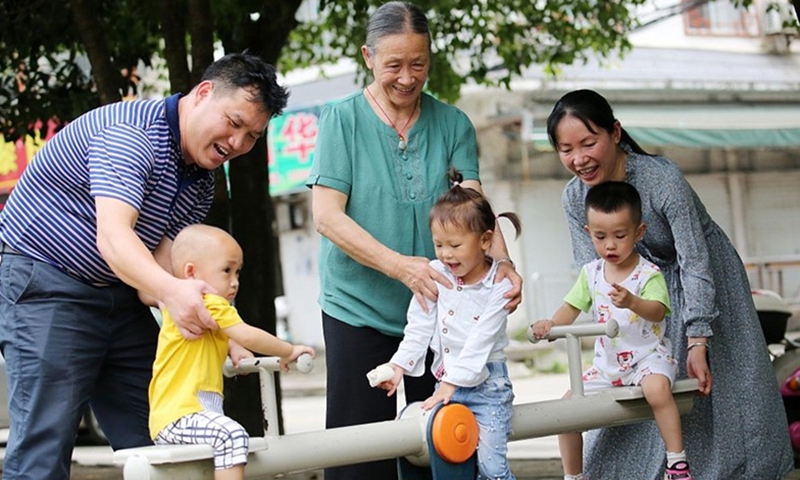China’s population has entered a zero-growth period, Chinese demographers said, as the number of newborns in the Chinese mainland dropped to 10.62 million in 2021, close to the number of deaths, but they noted China is developing from quantitative growth in the workforce to quality growth as record-high new graduates every year will improve the country’s population quality as well as benefit the high-tech development.
According to the National Bureau of Statistics (NBS) on Monday, population of the Chinese mainland at the end of 2021 was 14.13 billion, a slight increase of 480,000 from the end of 2020.
The number of newborns in Chinese mainland dropped to 10.62 million in 2021, down from 12 million in 2020 and marking a drop for the fifth consecutive year. The number of deaths recorded in 2021 was 10.14 million.
Ning Jizhe, head of the NBS, said at Monday’s press conference that the decline of newborns was mainly caused by the continued decrease in number of women of childbearing age, as 2021 has seen about 5 million fewer women of childbearing age between 15 and 49 than in the previous year. Other factors included delaying marriage and births due to fertility concept of couples and the pandemic, Ning said.
But China’s population will remain above 1.4 billion for some time to come and will maintain a certain level of growth considering the total population of women of childbearing age which was above 300 million, he said, noting that the third-child policy will gradually prove its effect on improving the number of newborns.
Chinese demographers have anticipated the population zero-growth period during the 14th Five-Year (2021-2025) period, and due to factors including the COVID-19 pandemic, the number of newborn babies is likely to fluctuate in the following years but the general trend of zero growth will not be altered, Du Peng, a professor at the School of Sociology and Population Studies at the Renmin University of China, told the Global Times on Monday.
He Yafu, an independent demographer, told the Global Times that the number of China’s newborn babies in 2021 was the lowest in several decades. Before China introduced the third-child policy in 2021, He and several other demographers had anticipated that China’s population would enter negative growth in 2022.
He said on Monday that if China enhanced its incentive policies to encourage more births as well as reduce couples’ burden in raising children such as promoting child-raising subsidies nationwide, it would slow the pace of population decline.
Liang Jianzhang, an economics professor at Peking University, told the Global Times that it is necessary, effective and important to further encourage fertility and increase the population to improve China’s economy.
He suggested to distributedistributing 1,000 yuan ($157.6) to each couple that has two children, and 2,000 yuan to each child for families with more than two kids. The cash subsidy should be provided until these children reach 20 years old.
Meanwhile the country should further reduce the tax for these couples, and the total amount of cash subsidy and tax reeducation should account for 2 to 3 percent of China’s GDP, Liang said, noting that analysis shows that for every extra 1 percent of GDP a country spends on fertility, the fertility rate rises by 0.1.
Population cannot be only assessed by numbers, as population quality is also significant, analysts said.
The number of college graduates in 2022 is expected to reach 10.76 million, a record high, which will outnumber the newborn babies in 2021. It indicated that with the decline of the number of newborn babies is the improvement of population quality, and China is developing from quantitative growth in the workforce to quality growth, which will benefit the future high-technology development of the country, Du said.
Three children play in a playground accompanied by their parents and grandparent. Photo: VCG




